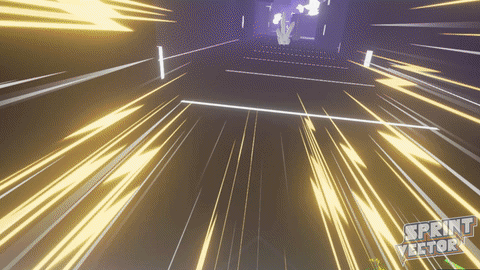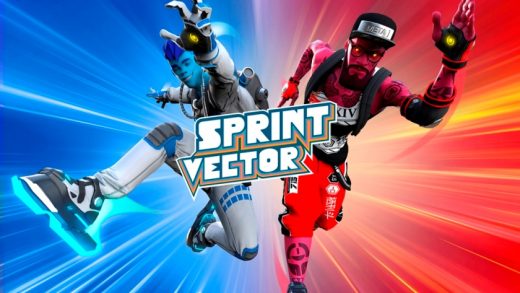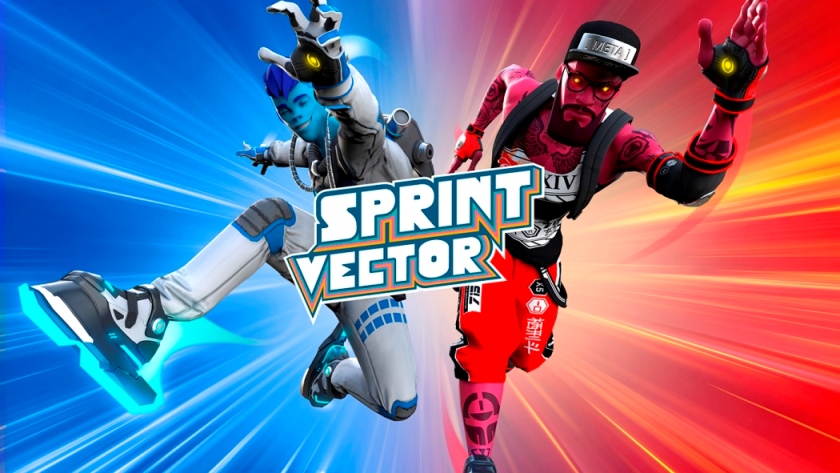Survios’ ‘Sprint Vector’ lets your run in VR without getting sick
Hand-based locomotion is nothing new in virtual reality, but it’s not usually an analog for walking or running. In Lone Echo, players use their feet to explore a weightless environment. In The Climb, one scales a mountain. These applications of arm movement feel natural because they’re identical to what one would physically do in those situations. Sprint Vector’s movement system isn’t, but somehow it still works. To run, players extend an arm forward, hold down the trigger and pull back for the length of the stride before letting go. They alternate arms back and forth to accelerate through a neon race course at breakneck speeds.
Everything I know about VR tells me this shouldn’t work, but when I tried an early build of the game at GDC 2017, it did. Gliding through corridors, vaulting over walls and gliding through the air all felt almost natural. When I strafed in the opposite direction I was looking, I felt a little bit dizzy, but never at all sick. Yet I know from experience that if I had performed the same actions at the same in-game speed using a thumbstick, I would have been extremely uncomfortable.

I asked Survios about it, and was told that momentum plays a large role here. Accelerating with a joystick would be too instant, but if the player uses his arms, he’s pushing himself and gaining speed with each push. Once he gets up to high speed, he’s eased into the experience and created enough forward momentum to keep the movement headed largely in one direction, without any sharp turns or inversions to upturn the stomach. In a way, it feels like cross-country skiing more than running, but it’s a movement system that works.
Still, it might be the most dangerous standing VR experience I’ve ever played — not because I feel like i’m going to get sick or fall down but because the movement system largely amounts to frantically flailing your arms in multiple directions. In the state the game is now, I’d be afraid to play it in my house for fear of hitting my wife or punching a bookshelf. The game is just so fast-paced that it’s easy to lose track of how much you’ve drifted in the real world from your starting point.
If players have enough space when the final game comes out, though, the risk might be worth it. Not only is Sprint Vector extremely fun, but it’s a fresh VR experience. One that breaks free from the crutch of teleportation. Its movement engine won’t work for every genre, but it’s a great experiment in finding better ways to move around in virtual worlds without actually moving around. Unfortunately, there’s no word when the game will be available to consumers. Right now, it’s just an early prototype — but it shows a lot of promise.
Click here to catch up on the latest news from GDC 2017!
(48)














